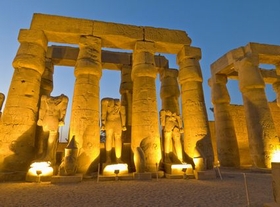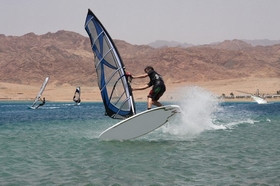One
among the most ancient places in Egypt is the classical tour of Egypt (pharaonic)
but often time it includes a few of the religions as well as Islam .The
eminent pyramids of Egypt around Giza almost close to Cairo
sightseeing.The famous classic tour is normally 10 to 14 days, and mostly
includes Cairo, Luxor in addition to Aswan, even though not in that order.
They are usually organized with, or without a Nile cruise.
Normally, such Egypt holidays will start in Cairo, due to the major
Airport where several of the tourists get in Egypt. On the other hand,
tours are usually split between the start as well as the end of the trip.
For instance, a tour may possibly cover the Giza pyramids in addition to
saqqarra (step pyramid) together with the Egyptian Antiquities museum on
the day of arrival. Therefore, after moving to Luxor and Aswan as well as
Cairo, tours will focus on visiting the citadel and khan el-khalili market
in Islamic
Cairo, the
churches as well as Coptic museum in ancient Cairo. Actually, the tours
may not be in this particular order.
After taking a day or two in Cairo, these tours often travel to either
Luxor or Aswan, regurally by air although a train can also do.
Nevertheless, other types of travel are usually arganised, including bus
travel. In fact, the bus may possibly stop at antiquity sites along the
way, and the antiquity near the fayoum.The next session of the tour
regularly starts in either Luxor or Aswan.
Egyptian holiday packages
Take note that Luxor is usually organized within one or two day tour. At
dawn, or one day of a two-day stay, the tour most likely visits the west
Bank where several monuments as well as tombs are found, including some of
the greatest in Egypt. This often takes place in the morning so as to
avoid the heat of the afternoon. Thus one afternoon or one day will
probably be kept for the East Bank, where the Luxor as well as Karnak
temples are easily located, in addition to the great Luxor museum. There
are many activities and among these include visiting the local bazaar.
For Aswan nearby south of Egypt, a day tour is normally enough for many
people, furthermore these may include visits to Elephantine island,
st.simon’s monastery, the unfinished obelisk, the Nubian museum, the high
Dam as well as philae island, even though the given time may not allow
most standard tours to check all these sites.But, regural addition to the
standard classical tour is the temples at Abu simbel.This in most times
adds a day to the Aswan tour. Various tours fly to Abu Simbel and still
get back in one day, allowing much time to accumulate on the visits to
Aswan sites. The unknown tours may end up in Abu Simbel, probably with a
stay in a local hotel there in.
Luxor Temple in Luxor, Egypt, once the Captial known as Thebes in past
times
Whenever, after cairo, atour usually ends up in luxor,the following
destination taking place at Aswan,or if probably Aswan is the first
stop,the nearby destination will normally be luxor.The usually used type
of transport between these two destinations are tour bus or Nile cruise
boat.As one may perhaps take a train or fly between the two
destinations,this is not done because of the antiquity sites which may
include the temples of kom ombo and Edfu, which are positioned between the
two cities
|

Any Places to Visit in Egypt
What Things to do in Egypt
Places to see, attractions and main cities
Egypt Attractions
Egypt offers innumerable attractions where tourists can
immerse themselves in a rich ancient culture and history. Every major city
boasts of magnificent monuments that must be seen to be believed.
In Cairo, witness the colossal
Pyramids of Giza and the majestic Sphinx, which
has been presiding over the desert sands for centuries. In Luxor,
the Luxor and Karnak Temples cannot be
missed. The Valley of the Kings, the royal cemetery for
62 Pharaohs, is also found in Luxor.
The High Dam of Aswan, which ushered a revolution in
Egypt, and Lake Nasser—the world’s largest man-made
lake—are also popular tourist destinations. In Aswan, the stupendous
rock-cut temples of Abu Simbel, which were cut and
reconstructed in 1968, are simply breathtaking.
Saint Catherine’s monastery is located at
the foot of Mount Moses in Sinai, where the prophet is believed to have
received the Ten Commandments from God. It is a UNESCO World Heritage
Site.
About Ancient Egypt
For many, the scope of Egypt's history is difficult to
comprehend. Its history covers some five thousand years, and encompasses
the origin of civilization, the rise of the Greeks and Romans, the
establishment of the Jewish, Christian and Islamic religions, the colonial
era when first France and then the English ruled the country, and finally,
a return to independence. Egypt has played an important role through all
of these eras, and today one can find monuments that evidence Egypt's role
in most of the world's historic events, from the beginning of mankind
until the present. More and more, we are not only learning about the
history of mankind in Egypt, but also about his prehistory, the way that
he migrated and finally began to organize communities that eventually lead
to a civilized world.
In Egypt, we find the earliest detailed records of warfare recorded
thousands of years ago, but we also find the cemeteries and monuments of
the world's last global war, World War II. In Egypt, we find some of the
first written words of civilization, but we also find great thinkers and
writers through the Greek period, into the Christian era, the archaic
Islamic period and even modern Nobel Literates. In Egypt, we find ancient
pyramids and giant columns supporting massive temples, but we can now find
these architectural elements spread throughout the world. Here, along with
the first monumental buildings made of stone, we also find the first paved
roads, the first wines and beer and even the first peace treaties between
organized governments. However, we also find the world's first scientists,
doctors, architects and mathematicians.
Egypt is our window to humanity's distant past and in understanding its
history, we find both mankind's greatest glories and achievements, as well
as his often repeated mistakes. We may follow along with the building of
empires, only to see them collapse again and again. We find great men and
rulers of renowned, but we often also see their ultimate demise.
And here, we learn about religion, its evolution and, as the world grows
older, its replacement with newer religions. Yet, the ancient Egyptian
religion has never really completely died out. Even today, many Egyptians
continue customs, including some aspects of religion, held over from
thousands of years ago. In fact, throughout the world, aspects of the
ancient Egyptian religion, particularly funerary, continue to effect our
modern lives.
We hope you enjoy our efforts to bring Egyptian history and its monuments
to your fingertips. Here one will find just about every aspect of ancient
Egypt, from culture to people, from monuments to knowledge. Take the time
to understand ancient Egyptian history, and we feel certain you will find,
within this knowledge, a better understanding of this modern world in
which we live.
Egypt Culture and Geography
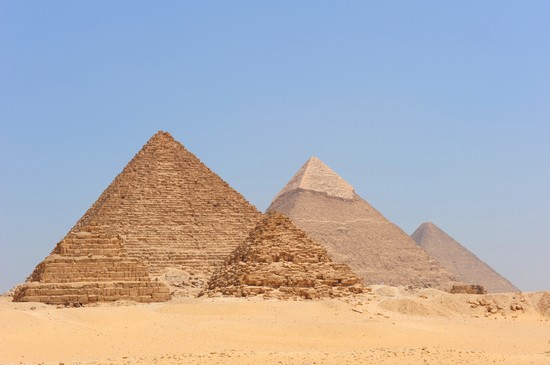
Being one of the earliest civilisations
known to mankind, the Nile has been a site of constant human habitation. A
unified Egyptian kingdom was established in 3150 BC, under the rule of
King Menes. The following three millenniums saw Egypt
under the rule of various dynasties. The last native dynasty fell to the
Persians in 343 BC. Later, Egypt was under the rule of Greeks, Romans and
Byzantines, which resulted in almost two thousand years of foreign rule.
With the Muslim Arabs, in 639 AD, Islam and the Arabic
language came to Egypt. With the completion of the Suez Canal, in 1857,
Egypt became an important transportation hub.
Having a history that is as old as Egypt, the culture of
the country is a rich mixture of the various cultures. Religion plays a
predominant role in the culture of Egypt. Art is a very important aspect
of Egyptian culture, with structured paintings done in reverence of the
Pharaohs.
Egypt shares its boundaries with two water bodies—the
Mediterranean Sea and the Red Sea. The
land boundaries of Egypt are shared by the Gaza Strip,
Israel, Libya and Sudan.
The Qattara Depression (–133 m) is the lowest point of
the region, while the highest is Mount Catherine (2,629
m).
What to Visit in Egypt
When you visit Egypt, there are so many sites that you will want to visit,
the length of your trip will never seem long enough! We often meet people
during our tours , that have been to Egypt more than 15 times, and they
keep returning to see something new! They ask about this newly discovered
site, or some new tomb that has been recently uncovered, or even places
that they have heard other people talk about! Here in Egypt, you will
always find new sites to visit and enjoy.
The adventure that is Egypt never ends! That is why it is a shame if you
come to Egypt, especially for the first time, and miss the grandiose
sites, such as the Pyramids of Giza, Abu Simbel or the west bank of Luxor,
to name but a few. There are so many travellers who fly direct to Upper
Egypt to see Luxor and Aswan, hoping that they will be stumble across the
Pyramids as well, and then they realize that they have to travel 720Km to
Cairo, where the Pyramids actually are, and end up paying $400 extra to
travel and see one site, which is most probably about half of what they
paid for their entire trip!
So my advice for you, dear traveller, is to plan well for your trip before
you come. Advance planning is the best way to save time, money and effort,
and of course to ensure that you get to see the sites that you have been
dreaming about for some time.
Try, as much as possible, to visit as many of the places that your trip
will allow! There is nothing worse than going home and wishing you had
visited somewhere you didn’t! We both know that you don't get the
opportunity to visit Egypt everyday!
Areas To be Avoided:
When travelling through Egypt, you should avoid certain areas,
particularly sites located in the centre of the Nile Valley! About 20
years ago there was rising tensions at these sites, Islamic
fundamentalists had targeted tourists in order to destroy the tourist
industry and the economy. This was part of a larger plan to bring down the
government, seize power themselves, and install the political ideas of
their own vision, a vision which no more resembles the rules of the Qur’an
than the Inquisition resembled the Christianity of Christ.
Some certain incidents occurred during the '80s and the '90s, a handful of
events took place again targeting the tourist industry. Without for a
moment trying to deny the reality of these events, the situation has been
blown out of all proportion by the world's press, while the situation in
other countries with flourishing tourist industries is far worse, their
incidents rarely make headlines. But in Egypt, if anything happens, it
becomes front-page news! In the mid '90s, a widespread, and harsh,
government crackdown campaign was implemented to try and stop any threats
to tourism and visitors.
A trip to Egypt still entails far less danger than a trip to anywhere else
in the world. During the realm of the violence in the mid '90s, there were
certain areas appointed as not good for tourists. These areas are located
in the centre of the Nile Valley, particularly Minia, Asyout and Sohag.
Unfortunately these places happen to have some of the most beautiful
monuments in Egypt, like the beautiful tombs at Bani Hassan in Minia, the
marvellous monasteries of Asyout and the Temple of Abydos in Sohag. In
time, all of these sites will be fully re-opened for tourists.
If you still think that you would like to visit these places as an
individual travelers, Well, you still can! However, be prepared for a
police escort with you, local police will not let you travel alone in
these areas, they will give an an escort ! I would suggest that the
safest, cheapest and most informative way to visit these sites is through
a reputable travel agent.

From the glorious Pyramids standing at the desert,
proudly looking down at the city’s inhabitants, to the magnificent Nile
flowing through the capital, Cairo is a vibrant city of contrasts and
contradictions. One of the biggest cities in the world and home to 18
million people, this vibrant metropolis is the perfect example of the
East and West coming together. Bright lights, busy streets, friendly
locals and a variety of trendy restaurants and nightspots pulsate
through the city, creating a startling contrast to the glittering
stillness of the Nile. Whether visiting the ancient sites and the
bustling bazaars, exploring the myriad of restaurant-packed streets or
enjoying a quiet felucca ride on the Nile, Cairo will sweep you off your
feet. Cairo, the Triumphant City, is Egypt’s wonderful
capital. It is the largest city in both the Middle East and Africa and
lies at the centre of all routes leading to, and from Asia, Africa and
Europe.
The city extends on the banks of the River Nile to the
south of its delta.
Cairo is the administrative capital and, close by, is almost every
Egypt Pyramid, such as the Great Pyramids of
Giza, the Ancient Egyptian City of Memphis and Capital of the
Old Kingdom, on the very edge of the city.
Cairo provides great and well organized culture, including art galleries
and music halls, such as the Cairo Opera House.
The city also provides some of the best accommodations and restaurants
in the world, such as the Cairo Marriott and the
Four Seasons.
Great part of the incredible and unbelievable charm of the capital of
Egypt is the result of 2000 years mixture of Islamic, Christian Coptic
and Jewish culture. An incredible and unique mixture that still keeps on
flourishing to this day.

One of the most visited sights in the world, seeing the Pyramids and
the Sphinx is an overwhelming experience, whether seeing them for the
first or the tenth time. Standing on the desert plateau of Giza for
centuries, the three pyramids - Great Pyramid built by Cheops, the two
others built by Hephren and Mycerinus - and the imposing Sphinx, with
the body of a lion and a human head, built to stand guard, have
witnessed the rise and fall of dynasties, surviving conquests and wars.
Just standing in front of them makes one feels part of history.
Unquestionably, a must-see for visitors.
The Pyramids of Egypt, which served as tombs for the Ancient Pharaohs ,
and the statue of the Sphinx, which dates from 2565 BC and is probably
the country's most famous monument, are located just west of Cairo in
the suburb of Giza. Despite the desert background usually depicted in
photographs, the Pyramids are extremely close to Cairo and are likely to
be affected by the city's continued expansion.
Cairo contains numerous religious and governmental structures. The
ornate architecture of the Citadel, in eastern Cairo, enhances the
city's skyline. Begun by Saladin in 1176 and modified and expanded by
later sultans, the Citadel is famous for its Mosques, Museums, and fort;
within the complex the Mohammad Ali Mosque (1830) is particularly
notable, with its storied domes and twin minarets. The Coptic Church
known as Al Mu'allaqa, located in Old Cairo, is believed to be the
earliest known site of Christian worship in Egypt; the church was built
in the 3rd century, though it has been almost entirely replaced through
successive restorations. Old Cairo also contains the Ben Ezra synagogue,
the central house of worship for Cairo's small Jewish population, and
the distinctive and imposing gates of Cairo. Once part of a wall that
encircled the city, these three gates are all that remain of the
original eight. Among Cairo's modern buildings are the Cairo Tower,
which stands at a height of 187 m (about 614 ft) and commands a view of
the Pyramids and the Citadel.
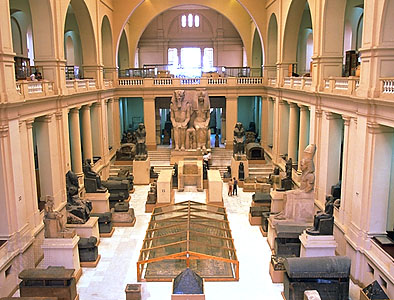
Housing more than 250,000 antiquities spanning more than 7,000 years
of Egyptian history, from 2700BC to 6th century AD, the museum is one of
the most important visits to make in Cairo. View King Tutankhamun’s
tomb, still preserved and in excellent condition, and more than 12 rooms
filled with his jewels and possessions including his famous mask made
out of gold. The museum also houses a Mummies Room, holding the mummy of
ancient Egypt’s greatest pharaoh, Ramses II, in addition to an extensive
and marvelous collection of ancient Egyptian artifacts, jewels and
status.

One of the most dramatic sites in Islamic Cairo, the Citadel, which
was built in 1176AD by Salah El Din, the legendary figure who conquered
the Crusaders in Palestine, includes several palaces and mosques that
were later built around it, and best exemplify the way in which Islamic
history affected art and architecture at that period, such as the
Mohamed Ali mosque, built in 1830, which is considered an architectural
tour de force.
Several mosques in Islamic Cairo, with their rich architecture, are
sights to behold. The Sultan Hassan mosque is believed to have been
built with stones taken from the Pyramids; the Amr Ib El Aas mosque is
considered the oldest mosque in Egypt, built in 642AD; and the Ahmed Ibn
Tulun mosque, erected in 879AD, is the largest mosque in Egypt to still
retain its original structure.
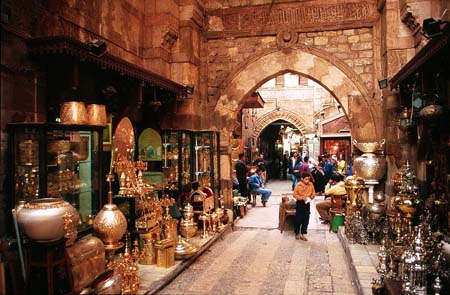
Located in close proximity to Islamic Cairo, Khan El Khalili is one of
the largest bazaars in the region. Originally founded in the 14th
century, the bazaar is home to Egypt’s oldest crafts and crafts
workshops. Jam-packed with shops and vendors selling anything and
everything from gold and silver jewelry, leather goods, perfume, papyrus
and ancient Egyptian trinkets, this is the perfect venue to buy
souvenirs and unique items, or to practice your bargaining skills – a
must-do at the bazaar!
The River Nile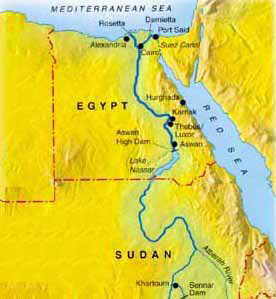
It
is the Nile -- the Father of Rivers -- that, more than any other feature
of the country, characterizes Egypt. The Nile emanates from the Sudan,
flowing north through the country for 1,545km (960mi), emptying into the
Mediterranean Sea and all along its course provides Egypt and her people
with life and sustenance.
Throughout history the Egyptian Nile
Valley has been defined as two distinct regions -- Upper Egypt which
extends south of Cairo to the Sudanese border, and Lower Egypt, which
encompasses the Nile Delta, which begins north of Cai
Luxor, a city in southern Egypt, is the
capital of the Al Uqsur governorate. With a population of 200,000
inhabitants, it is the site of Thebes, an ancient city. It is also
referred to as the ‘world’s greatest open air museum’.
Luxor experiences an overall mild climate with the exception of its
summers, which are scorching hot. Winters are dry and sunny with cold
nights. October to February is the coolest period, while May to October is
hot. April is the best time to visit.
The region of Luxor attracted tourists even in the ancient times during
the Greek and Roman empires. Today, it is well known for its temples and
the ‘Valley of the Kings’. Tourism has the largest share in Luxor’s
economy followed by agriculture.
Aswan, in southern Egypt, stands on the east bank of the
Nile. It is one of the driest inhabited areas in the world and is home to
approximately 200,000 people.
Aswan is a popular Egyptian winter resort; the summer months of
May-October are hot with highs of 41C; the winter months of November-April
are mild with temperatures dipping to 10C.
Once a military station, even today, due to its strategic location, it
houses a garrison of the Egyptian army.
The majority of the population is of Numidian origin and sustains their
livelihood through agricultural and tourism.
Sharm El Sheikh

A small Bedouins fishing village turned
into a large tourist resort city situated on the southern most tip of the
Sinai Peninsula and capital of Janub Sina, Southern Sinai province.
For thousands of years the Sinai Peninsula has attracted pilgrims from all
over the world.
In the last few decades the tourism has changed considerably, and today
visitors are flocking to go diving in the spectacular dive sites the
region offers.
Dahab is located on the southeast coast of
Egypt’s Sinai Peninsula.
It experiences dry desert climate. In summer, temperatures rise to 40C.
Its proximity to the mountains, however, makes the heat bearable. In the
winter months of January and February, temperatures dip to 15C.
Formerly a small Bedouin fishing village, Dahab has transformed into a
busy costal tourist centre. The economy now depends on the tourist flow.
Expectedly, the local population, the Bedouins, make their living through
the Tourism industry, with establishments on the waterfront, working as
guides and as traders and craftsmen in the local markets.
Marsa Alam, in south-eastern Egypt, is situated near the
Red Sea. This upcoming tourist hotspot has a small population of only 6000
inhabitants.
Situated near the Tropic of Cancer, winter (October to March) temperatures
range from 18-35C and summers (April to September) range from 20-45C.
Previously a small fishing village, Marsa Alam is fast developing into one
of Egypt’s most popular sea side destinations.
The local population is mainly of Bedouin origin.
El Gouna is a privately owned man-made resort along the
Red Sea, in Egypt. This resort with a permanent population of
approximately 10,000 inhabitants is a luxury resort with a distinct
Arabian style.
El Gouna enjoys a hospitable climate throughout the year. In winter, the
dry, sunny climate maintains a pleasant atmosphere, while in summer, the
cool breezes blowing in from the sea provide relief from the high
temperatures.
The resort is built on a cluster of small islands connected by several
lagoons. The resort houses all amenities and recreational activities found
in luxury resorts around the world.
|

|

